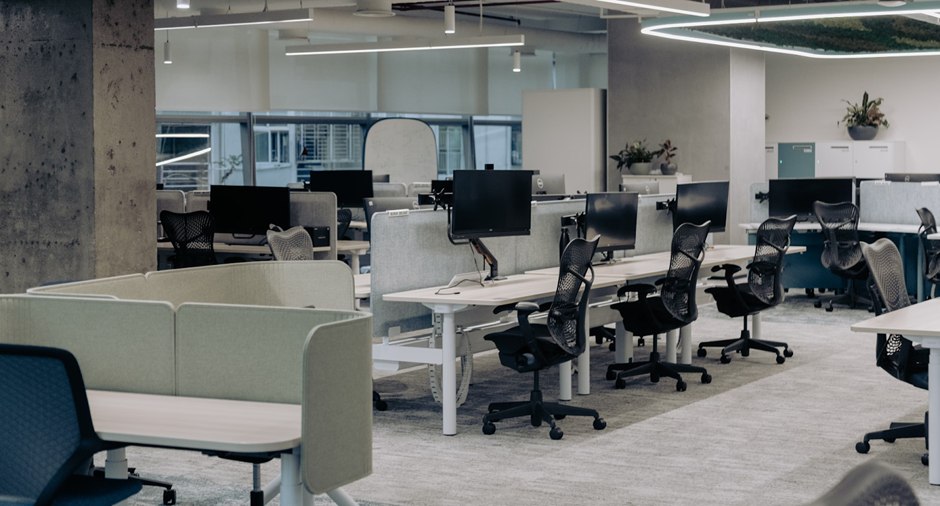 As we progress through 2025, it’s clear that the workplace is no longer just a physical location—it’s an ecosystem powered by digital tools, cultural values, and safety-first thinking. With hybrid models now firmly established and employee expectations higher than ever, businesses are turning to technology to build environments that are not only efficient but also safe, connected, and engaging.
As we progress through 2025, it’s clear that the workplace is no longer just a physical location—it’s an ecosystem powered by digital tools, cultural values, and safety-first thinking. With hybrid models now firmly established and employee expectations higher than ever, businesses are turning to technology to build environments that are not only efficient but also safe, connected, and engaging.
This year’s leading workplace tech upgrades fall into three key categories: safety, communication, and culture. Companies investing wisely in these areas are seeing gains in productivity, retention, and overall morale. Let’s explore what’s transforming the modern work environment in 2025—and what organizations should prioritize next.
1. Tech for a Safer Workplace
Safety has always been a pillar of responsible workplace management, but in 2025, it’s become deeply integrated with technology. Employers are no longer relying solely on manual checklists or periodic inspections; instead, they’re turning to proactive solutions that prevent incidents and ensure rapid response when necessary.
AI-powered surveillance systems now monitor potential hazards in real-time, alerting facility managers of spills, equipment malfunctions, or unauthorized access. Wearable sensors for employees in manufacturing or field roles help detect fatigue, heat stress, or harmful exposure to chemicals, often before the worker is even aware of it.
But one of the most widely adopted upgrades this year is instant drug testing. Maintaining a drug-free workplace isn’t just about compliance—it’s about ensuring everyone on the team is working in a safe and focused environment. In high-risk industries like construction, logistics, and healthcare, on-site testing options have become a critical component of workplace protocols.
Unlike traditional lab testing, instant drug test kits—particularly urine-based tests—offer rapid results without the need to wait days for external analysis. This means HR teams and safety officers can act quickly and reduce potential downtime due to incidents or uncertainty. It also fosters a culture of accountability, signaling to employees that safety isn’t negotiable.
2. Smarter Communication Tools

Communication is the connective tissue of any organization—and in 2025, it’s getting smarter, faster, and more visual.
Traditional emails are being replaced or supplemented by real-time collaboration platforms like Slack, Microsoft Teams, and AI-powered internal chatbots. These tools allow for faster decision-making and clearer alignment across remote and on-site teams. Meanwhile, virtual whiteboards and AI-generated meeting notes are making brainstorming and planning more effective, especially across time zones.
At the same time, companies are recognizing the power of visual communication within physical and virtual workplaces. Digital signage has emerged as a versatile and impactful tool for sharing information across the organization. From safety alerts and policy reminders to motivational messages and employee spotlights, these digital displays ensure that key messages are seen and remembered.
Placed strategically in break rooms, near time clocks, or in shared workspaces, digital signage helps keep everyone on the same page—especially those who might not be tied to a desk. It’s a bridge between departments, shifts, and even locations, making internal communication both dynamic and inclusive.
3. Cultivating Culture Through Technology

Beyond safety and communication, the third—and perhaps most transformational—pillar of workplace tech in 2025 is culture. Company culture has long been recognized as a differentiator in attracting and retaining talent. What’s new is the extent to which businesses are using technology to intentionally shape and strengthen that culture.
Employee engagement platforms now go far beyond simple surveys. These tools facilitate real-time feedback, pulse checks, and even AI-generated recommendations for team leads to act on. The result? Leaders can detect dips in morale or engagement before they escalate into turnover or burnout.
Gamification is also on the rise. By applying elements of game design to routine work—like onboarding, training, or even wellness challenges—companies are making the workplace more interactive and enjoyable. Leaderboards, progress badges, and peer-to-peer recognition tools foster a sense of friendly competition and camaraderie across teams.
Technology also plays a critical role in supporting hybrid and remote culture. In 2025, virtual reality (VR) town halls, metaverse-style meeting spaces, and immersive onboarding experiences are helping distributed teams feel more connected than ever. This is especially valuable for new hires, who may never set foot in a corporate HQ but still need to feel part of the mission and values.
Meanwhile, learning and development (L&D) platforms have become more adaptive and personalized. AI-powered tools now offer curated learning paths based on an employee’s role, performance history, and career aspirations. These platforms foster a culture of continuous learning, helping team members stay relevant and inspired.
Inclusivity and diversity initiatives are also being transformed through tech. Advanced analytics are being used to measure equity in hiring, promotion, and compensation. AI sentiment analysis helps HR identify potential issues of bias or exclusion from employee comments, enabling faster and more thoughtful interventions. In this way, technology isn’t just supporting culture—it’s actively shaping it for the better.
4. Integrating Systems for Holistic Impact
One of the challenges of adopting multiple technologies is ensuring they actually work together. In 2025, the most successful organizations are those that invest in interconnected ecosystems—where HR software, communication platforms, safety tools, and culture apps all speak the same language.
This is made possible through API integrations, cloud-based infrastructures, and low-code automation platforms. When systems are synchronized, insights flow more freely, administrative overhead is reduced, and employees have a more seamless experience.
For example, an employee could receive a personalized training prompt on a digital signage screen, respond via their mobile app, and have that progress automatically logged into the HR system. These small moments of cohesion create a sense of simplicity and modernity that employees value.
Conclusion: Tech as a Cultural Investment
In 2025, workplace technology is no longer just about improving efficiency—it’s about creating a workplace that’s safe, connected, and vibrant. Tools like instant drug test kits and digital signage aren’t isolated upgrades—they’re parts of a larger strategy to build a smarter, healthier environment where people thrive.
By embracing tech that supports safety, enables communication, and reinforces culture, companies position themselves not only as modern employers, but as places where people truly want to work. And in today’s talent-driven world, that’s the ultimate competitive advantage.

